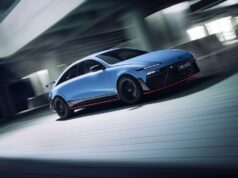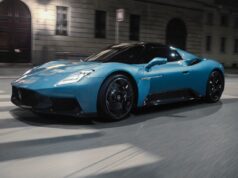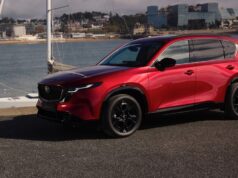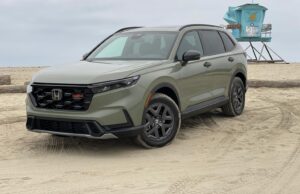The Union of Concerned Scientists (UCS) has named Honda as "2007 Greenest Automaker". The group ranks automakers U.S. auto fleet by overall performance of smog-forming emissions and greenhouse gas emissions. This is the fourth consecutive time that Honda has won the title of "greenest automaker"
PRESS RELEASE
TORRANCE, Calif., April 3 /PRNewswire/ -- Honda, the most fuel
efficient car company in America(1), has earned the title of America's
"2007 Greenest Automaker" from the Union of Concerned Scientists (UCS) for
the fourth consecutive time. The award is given by the UCS on a biennial
basis to the company with the lowest overall production of smog-forming
emissions and global warming emissions (primarily CO2) in its U.S.
automobile fleet.
(Photo: http://www.newscom.com/cgi-bin/prnh/20070403/LATU023)
(Logo: http://www.newscom.com/cgi-bin/prnh/20060516/LATU140LOGO)
"Honda remains the greenest U.S. automaker. The company installs clean
technology across its entire fleet of cars and trucks and that consistency
makes it a top environmental performer. Honda is one of only two automakers
to have better-than-average global warming scores in every class of
vehicles it sold in MY2005," said Don MacKenzie, a vehicles engineer with
the Union of Concerned Scientists. "In addition, Honda continues to have
the best smog score in four out of the five classes."
Honda is committed to remaining a leader in the development and
application of new technologies that address three critical environmental
challenges: improving fuel efficiency to reduce greenhouse gas emissions
that contribute to global warming; reducing smog-forming emissions to
address air pollution; and advancing real-world alternatives to gasoline to
promote energy sustainability.
"We are proud to be recognized as a leader, and will continue to
challenge ourselves to improve the environmental performance of our company
and our products," said John Mendel, executive vice president of American
Honda Motor Co., Inc. "We have entered a period in history where society is
more critically aware of how the actions we take today determine the course
of our environmental future for generations to come. We accept this as our
challenge."
Reducing CO2 Emissions
American Honda has applied leading-edge fuel efficient technologies to
the full range of its Honda and Acura products, resulting in
industry-leading corporate average fuel economy (CAFE) as determined by the
U.S. Environmental Protection Agency (33.9 mpg and 24.7 mpg, respectively,
for model year 2006 passenger cars and light trucks).
In May 2006, Honda became the first automaker to publicly announce
voluntary targets for the reduction of CO2 emissions by 2010 from both its
products and production operations. Specifically, the company is targeting
a five percent reduction in CO2 emissions for its global automobile fleet
from 2005 levels, on top of a five percent reduction achieved in the
2000-2005 time period. The company also will work toward a 10 percent
reduction for motorcycles and power products from 2000 levels by 2010.
In order to achieve this voluntary CO2 reduction goal through the
increased fuel efficiency of its automobiles, Honda will introduce a series
of new fuel-efficient technologies and products, including intelligent
engine systems; second-generation Variable Cylinder Management (VCM); a
new, more affordable gas-electric hybrid vehicle in 2009; and a new clean
diesel vehicle in about two years with high fuel efficiency and ultra-low
emissions equivalent to a gasoline engine vehicle.
Further, the global average of CO2 emissions to produce one automobile
at Honda plants declined by approximately 5 percent during the five year
period up to 2005. Honda is working toward a further reduction by 5 percent
or more by 2010, to achieve a total global reduction of 10 percent compared
to the level of 2000. For motorcycle and power product production, Honda
set goals to reduce CO2 emissions by 20 percent in each area.
Reducing Smog-Forming Emissions
Honda has long led the industry in reducing smog-forming vehicle
emissions, including the very first LEV, ULEV, SULEV and AT-PZEV vehicles
made available to U.S. consumers. For the time period covered by the UCS
analysis, 99.9 percent of all model year 2005 Honda and Acura vehicles
complied with the 2007 U.S. EPA Tier 2 emissions standards. To achieve the
Tier 2 BIN 5 classification, a vehicle must reduce NOx (oxides of nitrogen)
emissions by at least 75 percent from the previous standard.
Promoting Alternative Fuels
Honda is also pacing the industry in the development of alternative
fuel technologies. The Honda FCX is the first fuel cell vehicle to be
certified by U.S. EPA for regular commercial use, and the first to be
placed in the hands of individual customers. Those customers include the
world's first fuel cell family, the Spallinos of Redondo Beach, California,
and the world's youngest fuel cell customer, 17-year-old actress Q'orianka
Kilcher. In 2008, Honda will introduce its next generation fuel cell
vehicle, based on the futuristically-styled FCX Concept. Powered by a more
compact, powerful and efficient, Honda-developed, V Flow(TM) fuel cell
stack, the new Honda fuel cell vehicle will rival a gasoline-powered car in
its performance, range and comfort.
For the past eight years, Honda also has marketed the ultra-clean,
natural gas-powered Civic GX, the only dedicated alternative fuel vehicle
available to U.S. consumers in all 50 states. Further, the Civic GX is
marketed to consumers in California and New York with the innovative
Phill(TM) home refueling appliance. Natural gas is an abundant and
clean-burning domestic fuel with 25 percent less CO2 emissions and 30-50
percent lower operating costs than gasoline.
Honda is also developing new technologies for cleaner, more efficient
energy generation. This includes a third-generation Home Energy Station
(HES) for refueling fuel cell vehicles, and the production in Japan of
Honda- developed CIGS solar cells that require approximately half the
energy to produce compared to traditional thin-film solar cells. Both the
HES unit and a hydrogen refueling station using Honda's CIGS solar panels
are in operation at Honda's U.S. R&D center in Los Angeles, California.
Union of Concerned Scientists (UCS) Report
The Union of Concerned Scientists (UCS) is the leading science-based
non- profit working for a healthier environment and a safer world. UCS
conducts an analysis of major U.S. automakers every two years. This year's
report analyzed model year 2005 sales and certification standards of each
company's car and light truck fleet to determine its contribution of
smog-forming and heat trapping emissions. Honda also finished in first
place in the 2004, 2002 and 2000 UCS reports.
American Honda Motor Co., Inc.
Based in Torrance, California, American Honda Motor Co., Inc. was
founded in 1959 as the U.S. sales & marketing subsidiary of Honda Motor
Co., Ltd. Honda currently produces automobiles, motorcycles, all-terrain
vehicles, personal watercraft, lawn mowers and engines at its ten major
U.S. manufacturing plants(2) -- with two new plants currently under
construction. Honda also maintains three major R&D centers in Los Angeles,
Ohio and North Carolina that design and develop many of the products sold
in America. Currently, Honda employs more than 25,000 associates in the
U.S.
(1) * Based upon the average sales-weighted fuel consumption for 2006
model year passenger-car and light-truck fleets sold in the U.S. based on
CAFE reports.
(2) using domestic and globally sourced parts
| SOURCE American Honda Motor Co., Inc. |









